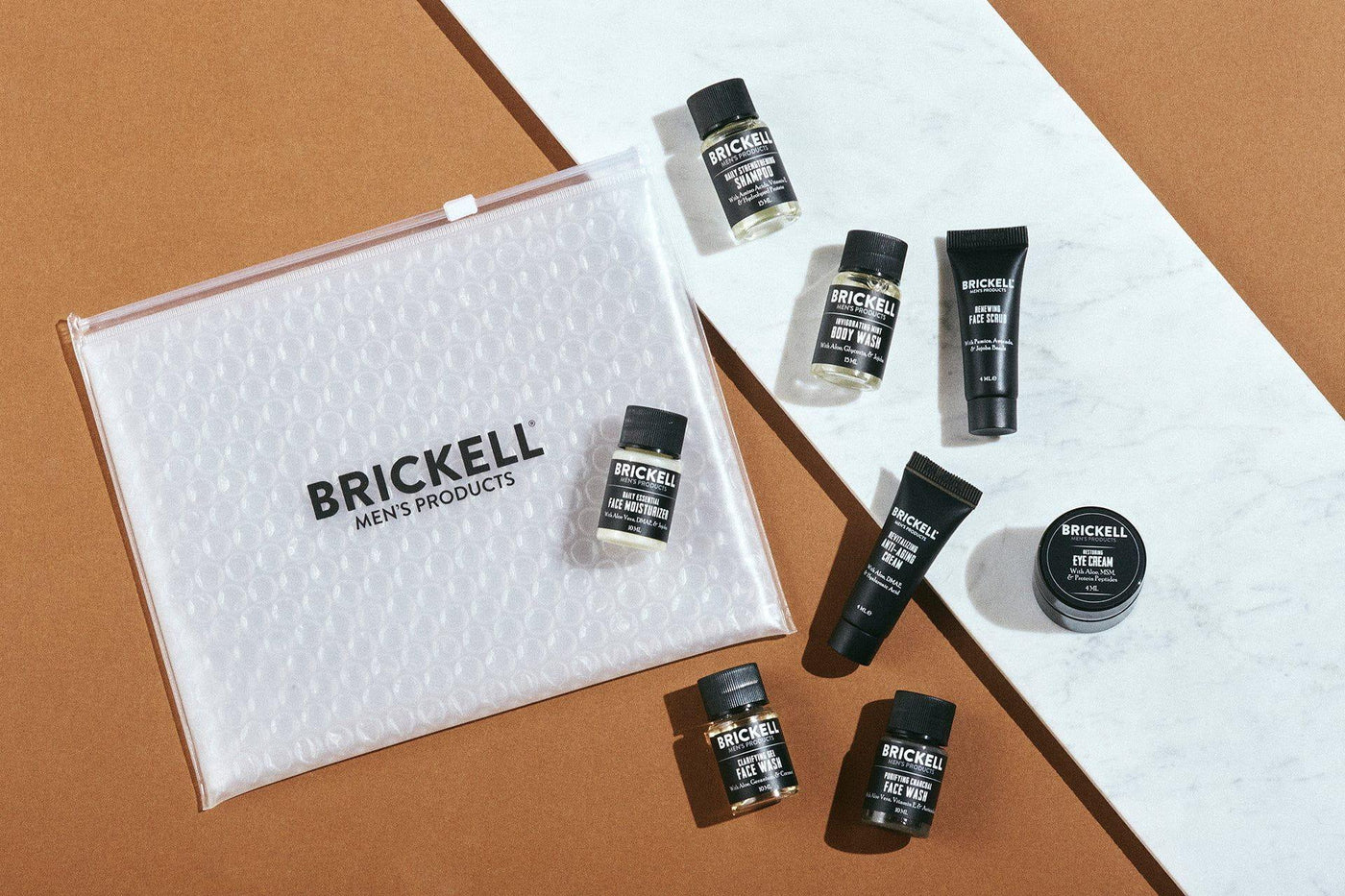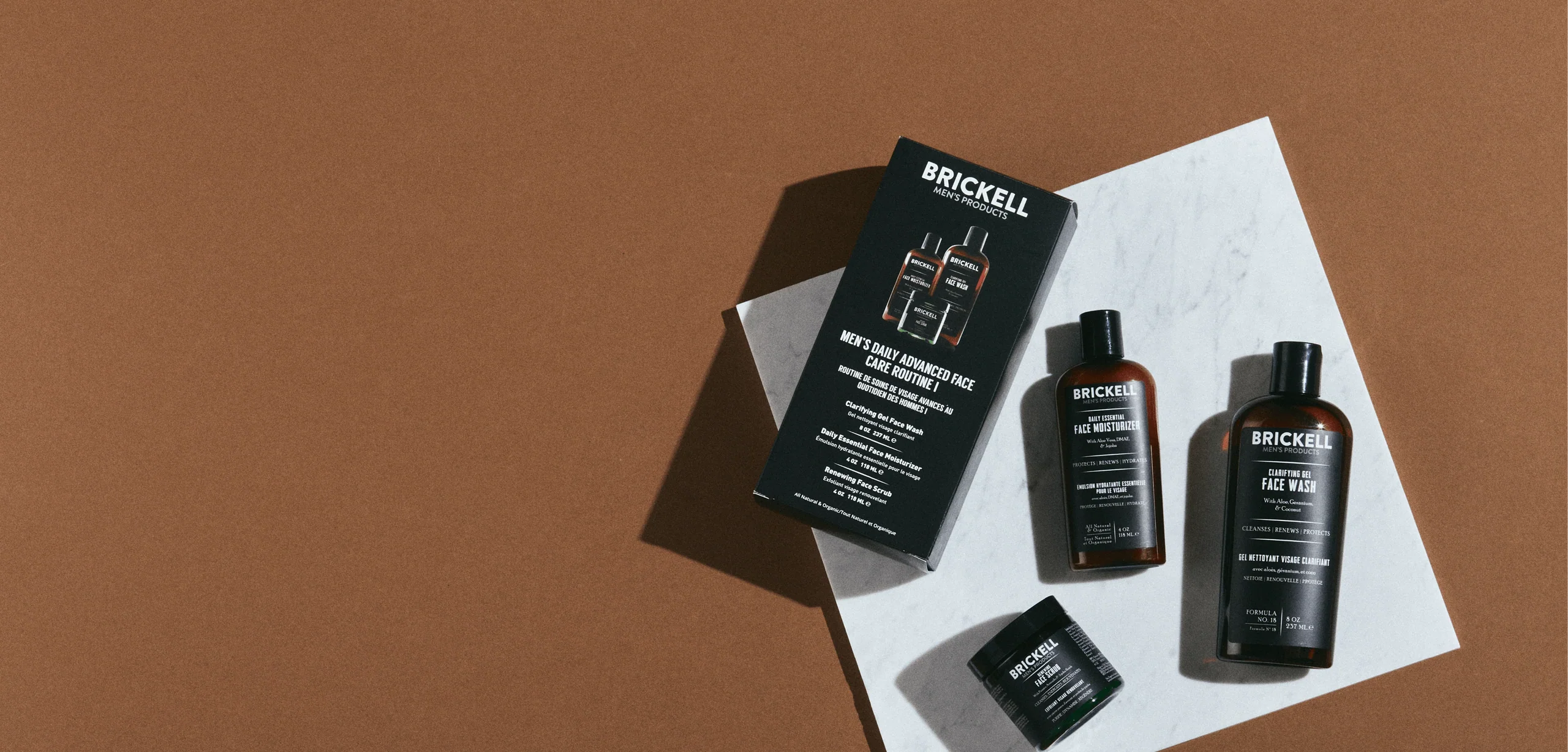The Grooming Manual
How to Get Rid of Acne Scars

Did you suffer through acne as a young person? Are you one of the millions of adults who still deal with occasional acne breakouts?
Even if you didn’t - are you a human with skin? In that case, it’s safe to say you’ve dealt with at least some form of acne in your life.
Perhaps the most pernicious aspect of acne is that it leaves behind acne scarring. Even after you’ve patiently waited for blemishes to fade away, their scars haunt you.
That’s why so many adults want to know how to get rid of acne scars. These permanent marks on your skin are frustrating reminders of bad breakouts. Fortunately, you can diminish and even eliminate acne scars with a little patience and a consistent skincare routine.
How Do Acne Scars Form?
Acne scars form because of inflammation and the trauma it inflicts on skin tissue. As the skin heals from this process, scars are left behind. That’s because collagen is produced to heal the skin. Its overproduction leads to the formation of scar tissue.
The more severe an acne breakout, the more likely it is to leave behind scars. So if your struggle with acne included breakouts with cysts and nodules, there’s a higher chance you will have permanent scarring as a result.
The more you scratch, itch, and pick at your acne, the more likely you are to be left with scars too. That’s tough - teenagers aren’t known for their incredible self control and it takes a ton of willpower to resist the innate urge to pick at acne blemishes. If you were guilty of this as a young person (or still are as an adult), don’t be too hard on yourself.
Types of Acne Scars
Not all acne scars are the same. Some are formed from not enough collagen, others from too much. It all depends on your skin, your body, and the type of acne you have. Some acne scars are easier to eliminate than others, but all can be treated and diminished.
Atrophic/Depressed Scarring
These scars look like small pits in your skin. They’re formed when your body doesn’t produce enough collagen during the healing process to fill in the skin, thus leaving a shallow depression. Types of atrophic acne scars include:
- Boxcar: Commonly appearing around the jaw and cheeks, boxcar scars have sharp, indented edges.
- Ice Pick: Formed on the thin skin of the forehead and cheeks, these scars are wider at the skin’s surface and narrow to a fine point the lower they go.
- Rolling: These scars are usually found around your lower cheeks and jaw where your skin is thicker. They have a wavy appearance and make your skin uneven because of their sloping edges.
Hypertrophic/Keloid
You can think of hypertrophic or keloid scars as the opposite of atrophic or depressed scars. Instead of an indentation caused by a lack of collagen, these are raised scars that are formed due to an excess of collagen during the healing process. They most commonly appear near your jaw line, shoulders, back, and chest.
How to Treat Acne Scars
When treating acne scars, your goals are to reduce discoloration, promote healthy collagen production, reduce further acne breakouts, and smooth the skin. Here’s how to accomplish that.
Keep Your Skin Clean
Cleanse your skin twice daily with a gentle face wash that eliminates dirt, bacteria, and other debris without stripping your skin of all its moisture.
Have acne prone skin? Go with our Acne Controlling Face Wash with 2% salicylic acid, grapefruit, and tea tree oil.
If you have dry or sensitive skin, you’ll benefit most from our Purifying Charcoal Face Wash. Its non-foaming formula is extra gentle and made with activated charcoal, jojoba, and olive oil.
Exfoliate Regularly
Exfoliation removes the layer of dead cells on the outer part of your skin. It clears out your pores and minimizes the chances of future breakouts. Exfoliating 2-3 times per week - depending on your skin type - also keeps your skin bright, fresh, and clear.
Use our Renewing Face Scrub for the best results. It’s made with pumice and jojoba beads to exfoliate instead of the harmful and harsh particles found in many products.
Of course, not all acne or acne scars are on your face. That’s why we also offer our Polishing Body Scrub - made with powerful natural ingredients. This shower scrub removes dirt, grime, and dead skin cells all over your body. It's formulated with oatstraw and aloe, which soothe and restore moisture to your skin cells, ensuring that your skin is rejuvenated after each use.
Use Scar Removal Cream
Scientifically backed ingredients like vitamin C, MSM, and antioxidants soothe inflammation, balance skin tone, and promote healing in blemished skin. They’re all found in our Clearing Scar Cream.
With consistent use, it substantially reduces the presence of scars and acne pockmarks. For the best results, use scar removal cream each evening after washing your face.
Protect Your Skin from UV Damage
UV damage exacerbates the appearance of your scars and contributes to hyperpigmentation. That’s why it’s critical that you use an SPF product daily if you are serious about reducing and eliminating your acne scars.
Our Daily Defense Face Moisturizer with SPF 20 both hydrates and protects your skin. It’s ideal for daily use - especially if you’re going to spend time out in the sun. But remember, UV damage accumulates with time and can occur even when you’re not in the direct sunlight.
What About More Aggressive Acne Scar Treatments?
Besides your at home skincare routine, there are other things that can help reduce scarring like microneedling and facial fillers. While these offer promising results, we recommend you start by focusing on a consistent skincare routine. Why?
- Less Expensive: A series of treatments by an aesthetician or dermatologist will be far more expensive than a regular skincare routine.
- Not as Harsh: Scar reducing treatments are often irritating to your skin and result in some negative side effects in the short term. This is not the case for skincare products.
When Will You See Results?
Your acne scars didn’t form overnight - don’t expect them to disappear overnight either. The most important thing is staying consistent with your skincare routine. That means:
- Washing your face twice daily
- Exfoliating 2-3 times each week
- Using scar removal cream every evening
- Applying an SPF product daily
It’s also important that you avoid picking at your blemishes or resulting scars. Any further irritation to your skin that’s self inflicted in this way will only worsen the way your scars look.
Even if your acne scars are not 100% eliminated, you will definitely see improvement by following this skincare routine. As an added bonus, you’ll have clearer skin, enjoy a brighter complexion, and reduce the appearance of wrinkles and fine lines on your face. So it’s all around a great plan for taking care of your skin.

